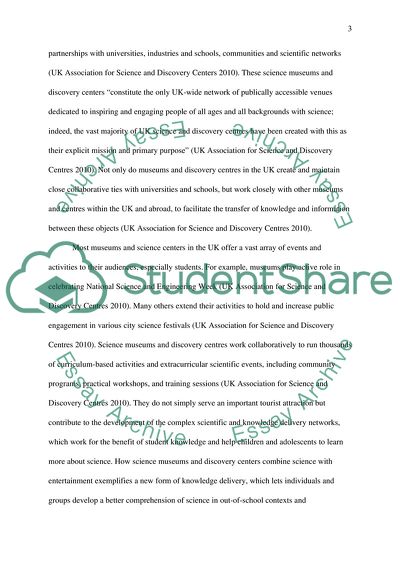Cite this document
(“Science Centers As Learning Laboratories Research Paper”, n.d.)
Science Centers As Learning Laboratories Research Paper. Retrieved from https://studentshare.org/education/1742313-science-museums-science-centres-are-they-genuinely-educational-or-do-they-merely-provide-a-form-of-dumbed-down-entertainment
Science Centers As Learning Laboratories Research Paper. Retrieved from https://studentshare.org/education/1742313-science-museums-science-centres-are-they-genuinely-educational-or-do-they-merely-provide-a-form-of-dumbed-down-entertainment
(Science Centers As Learning Laboratories Research Paper)
Science Centers As Learning Laboratories Research Paper. https://studentshare.org/education/1742313-science-museums-science-centres-are-they-genuinely-educational-or-do-they-merely-provide-a-form-of-dumbed-down-entertainment.
Science Centers As Learning Laboratories Research Paper. https://studentshare.org/education/1742313-science-museums-science-centres-are-they-genuinely-educational-or-do-they-merely-provide-a-form-of-dumbed-down-entertainment.
“Science Centers As Learning Laboratories Research Paper”, n.d. https://studentshare.org/education/1742313-science-museums-science-centres-are-they-genuinely-educational-or-do-they-merely-provide-a-form-of-dumbed-down-entertainment.


